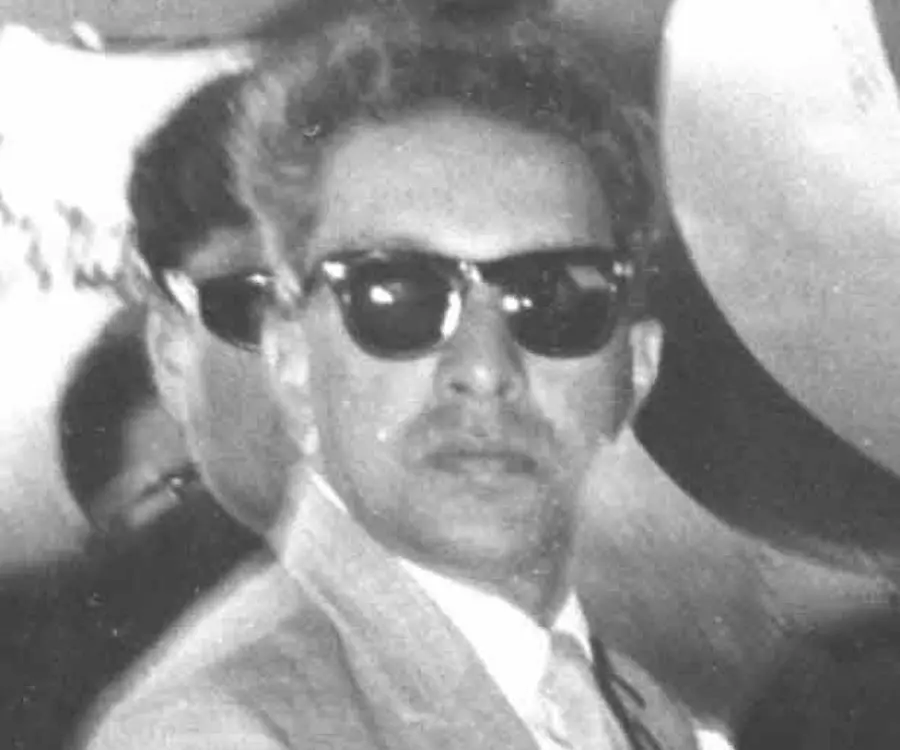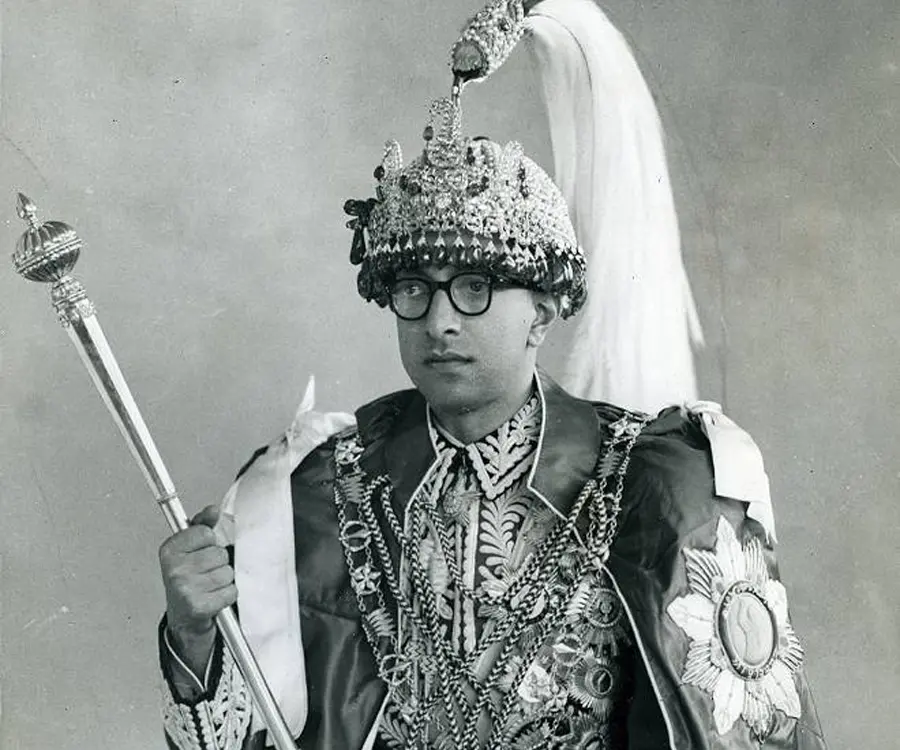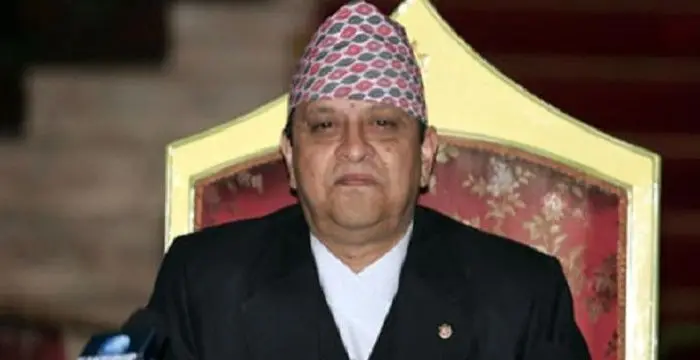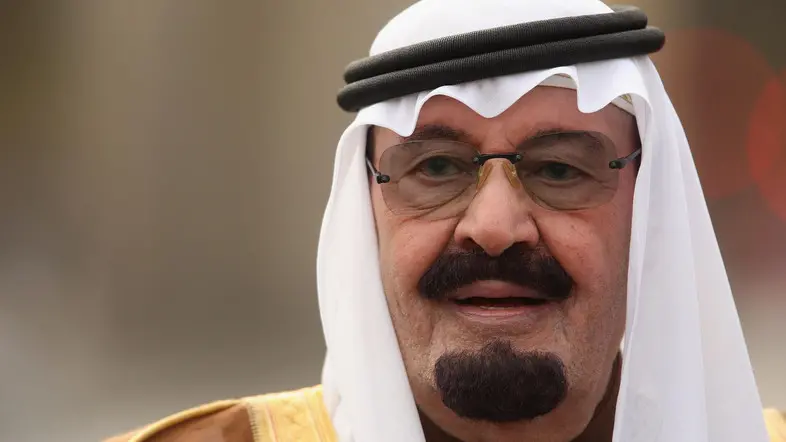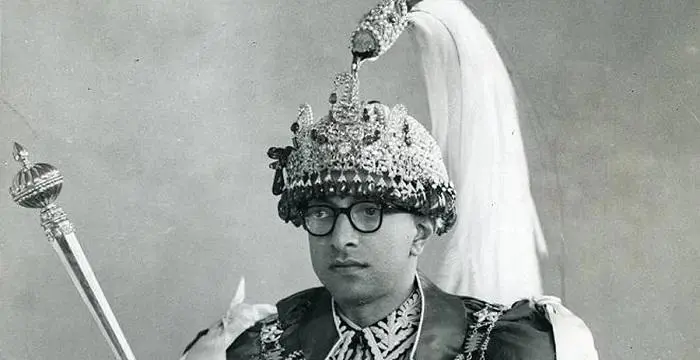
Mahendra Bir Bikram Shah Dev - Emperors, Family and Childhood
Mahendra Bir Bikram Shah Dev's Personal Details
Mahendra Bir Bikram Shah Dev was the King of Nepal from 1955 to 1972
| Information | Detail |
|---|---|
| Birthday | June 11, 1920 |
| Died on | January 31, 1972 |
| Nationality | Nepali |
| Famous | Eton College, Historical Personalities, Emperors & Kings, Emperors, Former King of Nepal, Kings |
| Spouses | Indra Rajya Laxmi Devi, Queen Ratna of Nepal |
| Childrens | King Birendra, King Gyanendra, Prince Dhirendra, Princess Shanti, Princess Sharada, Princess Shobha |
| Universities |
|
| Notable Alumnis |
|
| Birth Place | Kathmandu, Nepal |
| Religion | Hinduism |
| Gender | Male |
| Father | King Tribhuvan of Nepal |
| Mother | Queen Kanti Rajya Laxmi Devi Shah |
| Sun Sign | Gemini |
| Born in | Kathmandu, Nepal |
| Famous as | Former King of Nepal |
| Died at Age | 51 |
// Famous Kings
Sundiata Keita
Sundiata Keita was the founder of the Mali Empire in West Africa. This biography profiles his childhood, early life, struggles, founding of empire, rule, administration, achievements and also gives some fun facts.
Ashoka
Ashoka was the third emperor of the Mauryan Dynasty and ruled almost the entire Indian subcontinent. This biography profiles his childhood, life, reign, achievements and timeline
Murad IV
Murad IV was one of the mighty Sultans in the history of the Ottoman Empire. This biography profiles his childhood, family, accession, rule, administration and timeline.
Mahendra Bir Bikram Shah Dev's photo
Who is Mahendra Bir Bikram Shah Dev?
Mahendra Bir Bikram Shah Dev was the King of Nepal from 1955 to 1972. He was the ninth Shah dynasty emperor of Nepal. His reigning years were marked with numerous political reforms aimed at improving and developing the economic, political and social status of his country. Historians describe him as a “true patriot” as he firmly believed in the mantra "May my country lives on even if I die". He was admired, as the "Builder of Nepal" because he had constructed several monuments, buildings and improved the lifestyle of his people. His notable works include the construction of East-West Highway (Mahendra Highway), the Pragya Pratisthan Bhawan and Back to the Village National Campaign. He played an important role in making Nepal a member of the United Nations. In the light of his achievements, he was bestowed with several honours and awards such as Knight of the Order of the Elephant (Denmark), Royal Victorian Chain (U.K.) and Collar of the Order of the Chrysanthemum (Japan). King Mahendra was survived by his son Birendra who took to the throne in the spring of 1975.
// Famous Former King of Nepal
Gyanendra Bir Bikram Shah Dev
Gyanendra Bir Bikram Shah Dev was the king of Nepal from 2001 to 2008. This biography profiles his childhood, life, reign, achievements and timeline.
Childhood & Early Life
King Mahendra Bir Bikram Shah Dev was born to King Tribhuvan Bir Bikram Shah Dev and Queen Kanti Rajya Laxmi Devi Shah on June 11, 1920 at Narayanhity Royal Palace in Kathmandu, Nepal.
He studied politics, economics, english language and Nepali language and culture, privately in the Palace. He was a deep admirer of Nepalese literature and composed several poems.
On the sudden death of his father, King Tribhuvan (March 13, 1955) in Zurich Canton Hospital (Switzerland), Mahendra ascended the throne. The Coronation Ceremony of King Mahendra was held on May 2, 1956.
Reign
In 1950s the discontent among Nepalese due to a weak autocratic regime of the ruling dynasty of the Ranas had caused a revolt. The revolution of November 1950 brought an end to the Rana empire that had ruled the country for 104 years, since 1846 A.D. The personal safety of the royals was critical. Subsequently, the Ranas agreed to form a coalition government under the captive King Tribhuvan Bir Bikram Shah Dev and they shared power equally with the Nepali Congress. However, the political situation was threatening as the government was formed by different parties who wanted to control and rule the country.
When Mahendra Bir Bikram Shah Dev ascended the throne in 1955, he found the political situation of Nepal deteriorating. Subsequently, he took a stringent measure on 15 December 1960 and dissolved the elected parliament, suspended the constitution, imposed direct rule and imprisoned the ruling Prime Minister Bishweshwar Prasad Koirala and his closest government colleagues.
He introduced several reforms for improving the administration, political system and society.
In 1960 the King established the Panchayat System, using his emergency powers. It was a hierarchical system to maintain law and order and involved village, district and national councils.
To achieve efficient administration and bring rapid progress and development in the country, King Mahendra established the National Planning Council. This agency had to make recommendations to the King for the development projects in Nepal. For the convenience of administration, he divided the kingdom of Nepal into 14 Zones and 75 Districts.
The King realized that villages and remote areas of Nepal were the backbone of the country. Therefore, he focused on the development of villages and established a National Campaign – “Back to the Village” in 1967. This campaign spread awareness among the villagers regarding their rights, duties and privileges and strengthened their sense of nationalism.
In his reign, King Mahendra introduced Five-year Plans that focused on the development of the country. Under this plan, he launched several schemes like Rastriya Beema Sansthan (Life Insurance Corporation), Nepal Rastra Bank, Rastriya Banijya Bank and the Agriculture Development Bank.
He also launched numerous industries and provided employment for his people. Bansbari Leather Shoes Factory and Janakpur Cigarette factory were established.
King Mahendra introduced the Land Reforms Act in January, 1964 to protect the rights of the small farmers and tenants.
Hydal Power projects at Trishuli and Panuati were set up to generate electric power to run the industries.
He established the Supreme Court and reformed the Nepalese judicial system to protect the fundamental rights of the citizens.
He was an equally renowned poet and composed several heart-warming poems and songs in Nepali Language. He is regarded as the pioneer poet of the modern Nepali literature.
Major Works
He laid down the foundation of the East-West Highway (Mahendra Highway) that serves as a trade route between Nepal and its neighboring countries.
He created and introduced the New Civil Code (Muluki Ain) on 17th August 1963 to protect the rights of women, children and weaker sections of the society.
For the development of education across the country, King Mahendra established the Tribhuvan University, the Janak Education Material Centre and Teacher's Training Institute.
For the development of culture, arts and sports he created the National Sports Council, Rastriya Nachghar, Rastriya Sabhagriha and Dasarath Stadium.
He also focused on developing tourism in Nepal. Subequently, he constructed numerous, rest-houses, inns and water taps in this beautiful country.
He pursued a foreign policy of neutrality between China and India. Nepal continued to enjoy diplomatic relations with 51 countries till January 1972.
Due to his friendly attitude towards neighboring countries and the international organizations, Nepal was admitted to the United Nations (U.N.O) in 1955, International Labour organization and the Non-aligned Community.
Awards & Achievements
King Mahendra Bir Bikram Shah Dev was appointed as a British Field Marshal in 1960.
He received honours from several countries - France: Grand Cross of the Order of Legion of Honour (1956), Finland: Grand Cross with Collar of the Order of the White Rose (1958), Denmark: Knight of the Order of the Elephant (1960), Iran: Grand Collar of the Order of Pahlavi (1960), Japan: Collar of the Order of the Chrysanthemum (1960), United Kingdom: Royal Victorian Chain (1961), Grand Cross Special Class of the Order of Merit of the Federal Republic of Germany (1964), Belgium: Grand Cross of the Order of Leopold II (1964), Grand Cross of the Order of the Netherlands Lion (1967), Collar of the Order of the Million Elephants and the White Parasol, Kingdom of Laos (1970), Nishan-e-Pakistan (1970), Collar of the Order of Sikatuna, Rank of Raja, Philippines (1971) and Iran: Commemorative Medal of the 2500th Anniversary of the founding of the Persian Empire (1971).
His national honours include: Sovereign of the Order of Nepal Pratap Bhaskara, Sovereign of the Order of Ojaswi Rajanya, Sovereign of the Order of Nepal Taradisha, Sovereign of the Order of Tri Shakti Patta, Sovereign of the Order of Gorkha Dakshina Bahu, Most Glorious Mahendra Chain (26 February 1961), and Commemorative Silver Jubilee Medal of King Tribhuvan (11 December 1936).
Personal Life & Legacy
At the age of twenty he married Indra Rajya Laxmi Devi on May 8, 1940. The Royal couple was blessed with six children (3 daughters - Shanti, Sharada, and Shobha and 3 sons- Birendra, Gyanendra, Dhirendra).
After her death in 1950, the King remarried two years later on December 10, 1952. The new Queen Ratna Rajya Laxmi Devi was the younger sister of the deceased queen.
He ruled the country for 17 years and died at Diyalo Bungalow in Chitwan, Bharatpur, Nepal, on 31st January 1972, due to a heart failure.
His eldest son Birendra resumed the throne on 24 February 1975.
// Famous Emperors
Sundiata Keita
Sundiata Keita was the founder of the Mali Empire in West Africa. This biography profiles his childhood, early life, struggles, founding of empire, rule, administration, achievements and also gives some fun facts.
Ashoka
Ashoka was the third emperor of the Mauryan Dynasty and ruled almost the entire Indian subcontinent. This biography profiles his childhood, life, reign, achievements and timeline
Murad IV
Murad IV was one of the mighty Sultans in the history of the Ottoman Empire. This biography profiles his childhood, family, accession, rule, administration and timeline.
Mahendra Bir Bikram Shah Dev biography timelines
- // Nov 1846 To Nov 1950In 1950s the discontent among Nepalese due to a weak autocratic regime of the ruling dynasty of the Ranas had caused a revolt. The revolution of November 1950 brought an end to the Rana empire that had ruled the country for 104 years, since 1846 A.D. The personal safety of the royals was critical. Subsequently, the Ranas agreed to form a coalition government under the captive King Tribhuvan Bir Bikram Shah Dev and they shared power equally with the Nepali Congress. However, the political situation was threatening as the government was formed by different parties who wanted to control and rule the country.
- // 11th Jun 1920King Mahendra Bir Bikram Shah Dev was born to King Tribhuvan Bir Bikram Shah Dev and Queen Kanti Rajya Laxmi Devi Shah on June 11, 1920 at Narayanhity Royal Palace in Kathmandu, Nepal.
- // 11th Dec 1936 To 26th Feb 1961His national honours include: Sovereign of the Order of Nepal Pratap Bhaskara, Sovereign of the Order of Ojaswi Rajanya, Sovereign of the Order of Nepal Taradisha, Sovereign of the Order of Tri Shakti Patta, Sovereign of the Order of Gorkha Dakshina Bahu, Most Glorious Mahendra Chain (26 February 1961), and Commemorative Silver Jubilee Medal of King Tribhuvan (11 December 1936).
- // 8th May 1940At the age of twenty he married Indra Rajya Laxmi Devi on May 8, 1940. The Royal couple was blessed with six children (3 daughters - Shanti, Sharada, and Shobha and 3 sons- Birendra, Gyanendra, Dhirendra).
- // 1950 To 10th Dec 1952After her death in 1950, the King remarried two years later on December 10, 1952. The new Queen Ratna Rajya Laxmi Devi was the younger sister of the deceased queen.
- // 1955 To 15th Dec 1960When Mahendra Bir Bikram Shah Dev ascended the throne in 1955, he found the political situation of Nepal deteriorating. Subsequently, he took a stringent measure on 15 December 1960 and dissolved the elected parliament, suspended the constitution, imposed direct rule and imprisoned the ruling Prime Minister Bishweshwar Prasad Koirala and his closest government colleagues.
- // 1955Due to his friendly attitude towards neighboring countries and the international organizations, Nepal was admitted to the United Nations (U.N.O) in 1955, International Labour organization and the Non-aligned Community.
- // 13th Mar 1955 To 2nd May 1956On the sudden death of his father, King Tribhuvan (March 13, 1955) in Zurich Canton Hospital (Switzerland), Mahendra ascended the throne. The Coronation Ceremony of King Mahendra was held on May 2, 1956.
- // 1960In 1960 the King established the Panchayat System, using his emergency powers. It was a hierarchical system to maintain law and order and involved village, district and national councils.
- // 1960King Mahendra Bir Bikram Shah Dev was appointed as a British Field Marshal in 1960.
- // 17th Aug 1963He created and introduced the New Civil Code (Muluki Ain) on 17th August 1963 to protect the rights of women, children and weaker sections of the society.
- // 1964King Mahendra introduced the Land Reforms Act in January, 1964 to protect the rights of the small farmers and tenants.
- // 1967The King realized that villages and remote areas of Nepal were the backbone of the country. Therefore, he focused on the development of villages and established a National Campaign – “Back to the Village” in 1967. This campaign spread awareness among the villagers regarding their rights, duties and privileges and strengthened their sense of nationalism.
- // Jan 1972He pursued a foreign policy of neutrality between China and India. Nepal continued to enjoy diplomatic relations with 51 countries till January 1972.
- // 31st Jan 1972He ruled the country for 17 years and died at Diyalo Bungalow in Chitwan, Bharatpur, Nepal, on 31st January 1972, due to a heart failure.
- // 24th Feb 1975His eldest son Birendra resumed the throne on 24 February 1975.
// Famous Emperors & Kings
Sundiata Keita
Sundiata Keita was the founder of the Mali Empire in West Africa. This biography profiles his childhood, early life, struggles, founding of empire, rule, administration, achievements and also gives some fun facts.
Ashoka
Ashoka was the third emperor of the Mauryan Dynasty and ruled almost the entire Indian subcontinent. This biography profiles his childhood, life, reign, achievements and timeline
Murad IV
Murad IV was one of the mighty Sultans in the history of the Ottoman Empire. This biography profiles his childhood, family, accession, rule, administration and timeline.
Xerxes I
Xerxes I (Xerxes the Great) was the fourth and the most famous king of the Archaemenid dynasty of Persia. This biography profiles his childhood, family, personal life, life history, achievements, campaigns, administration, death and other facts.
Sargon of Akkad
Sargon of Akkad, also called ‘Sargon the Great’, ‘Sarru-Kan’ and ‘Shar-Gani-Sharri’, was the founder and first king of the Akkadian Empire. This biography profiles his childhood, life, rule, administration, timeline, and gives some fun facts.
Abdullah of Saudi Arabia
Abdullah bin Abdulaziz Al Saud was the King of Saudi Arabia from 2005 to 2015 and the third wealthiest head of state in the world. Find more facts about his life, childhood and timeline.
Mahendra Bir Bikram Shah Dev's FAQ
What is Mahendra Bir Bikram Shah Dev birthday?
Mahendra Bir Bikram Shah Dev was born at 1920-06-11
When was Mahendra Bir Bikram Shah Dev died?
Mahendra Bir Bikram Shah Dev was died at 1972-01-31
Where was Mahendra Bir Bikram Shah Dev died?
Mahendra Bir Bikram Shah Dev was died in Bharatpur, Nepal
Which age was Mahendra Bir Bikram Shah Dev died?
Mahendra Bir Bikram Shah Dev was died at age 51
Where is Mahendra Bir Bikram Shah Dev's birth place?
Mahendra Bir Bikram Shah Dev was born in Kathmandu, Nepal
What is Mahendra Bir Bikram Shah Dev nationalities?
Mahendra Bir Bikram Shah Dev's nationalities is Nepali
Who is Mahendra Bir Bikram Shah Dev spouses?
Mahendra Bir Bikram Shah Dev's spouses is Indra Rajya Laxmi Devi, Queen Ratna of Nepal
Who is Mahendra Bir Bikram Shah Dev childrens?
Mahendra Bir Bikram Shah Dev's childrens is King Birendra, King Gyanendra, Prince Dhirendra, Princess Shanti, Princess Sharada, Princess Shobha
What was Mahendra Bir Bikram Shah Dev universities?
Mahendra Bir Bikram Shah Dev studied at Eton College, Eton College
What was Mahendra Bir Bikram Shah Dev notable alumnis?
Mahendra Bir Bikram Shah Dev's notable alumnis is Eton College
What is Mahendra Bir Bikram Shah Dev's religion?
Mahendra Bir Bikram Shah Dev's religion is Hinduism
Who is Mahendra Bir Bikram Shah Dev's father?
Mahendra Bir Bikram Shah Dev's father is King Tribhuvan of Nepal
Who is Mahendra Bir Bikram Shah Dev's mother?
Mahendra Bir Bikram Shah Dev's mother is Queen Kanti Rajya Laxmi Devi Shah
What is Mahendra Bir Bikram Shah Dev's sun sign?
Mahendra Bir Bikram Shah Dev is Gemini
How famous is Mahendra Bir Bikram Shah Dev?
Mahendra Bir Bikram Shah Dev is famouse as Former King of Nepal



